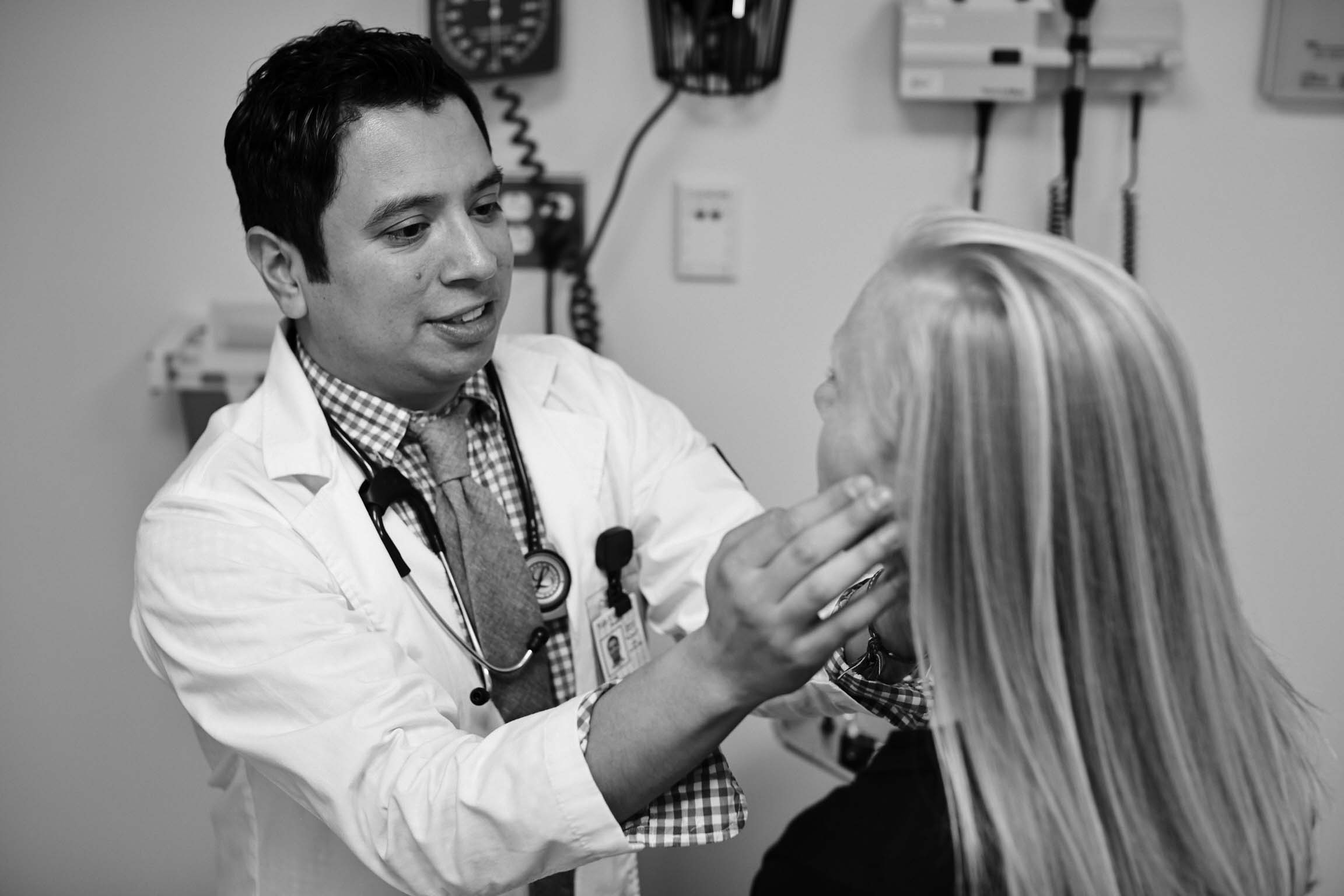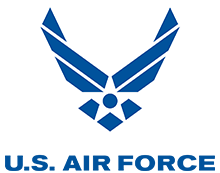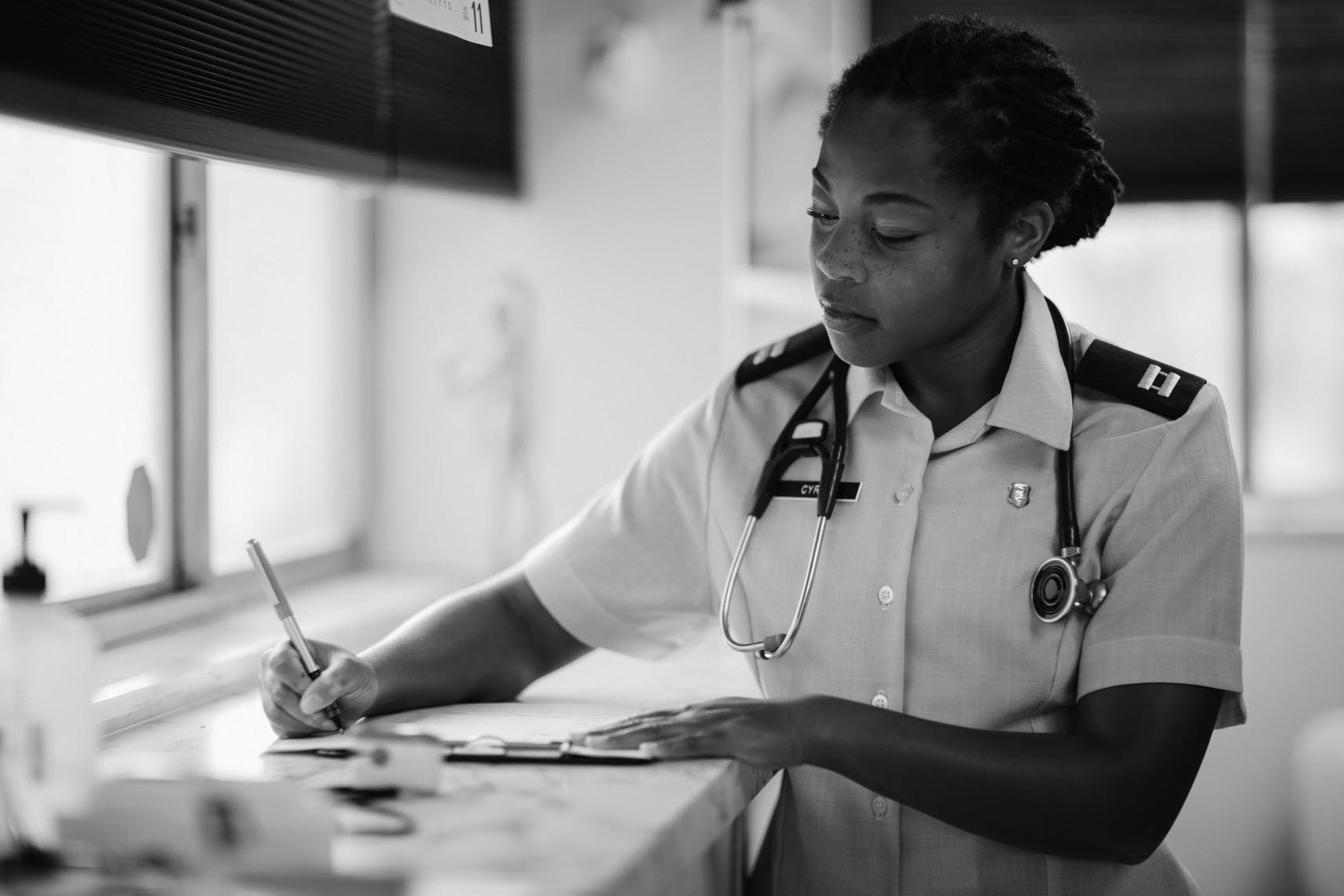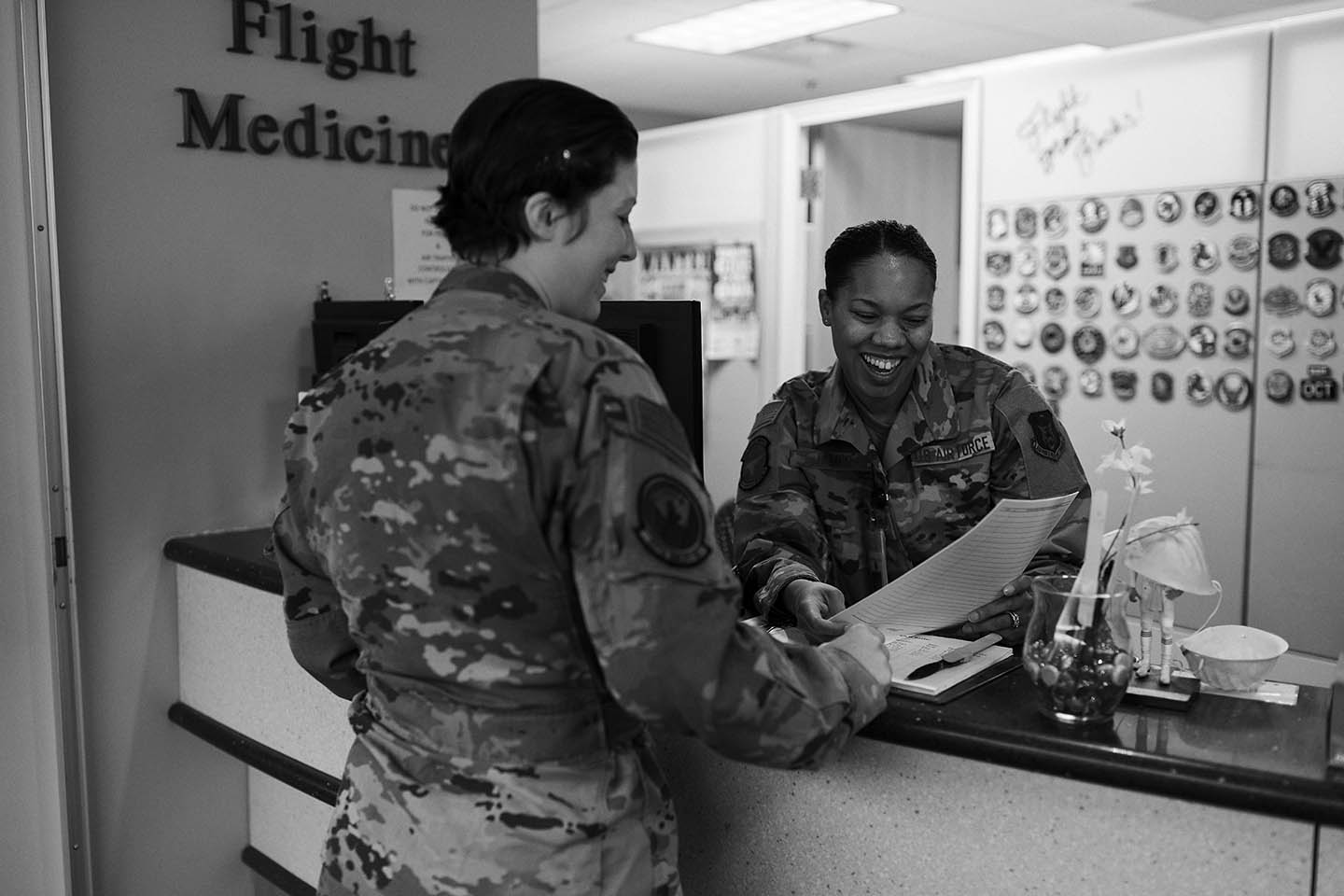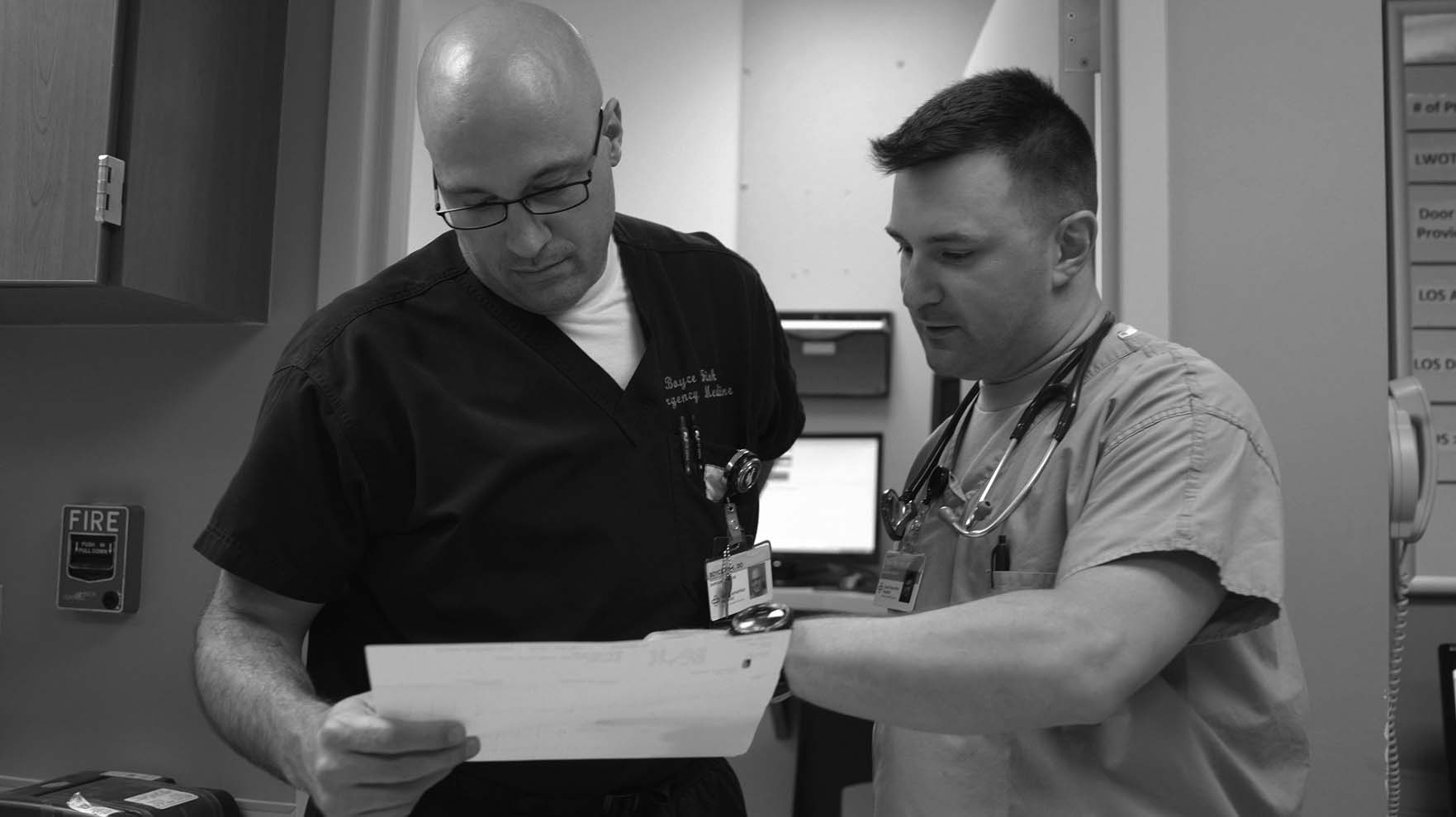- FAQs
- |
Day in the Life
Follow five military physicians as they navigate the challenges and rewards during one day of service.
5 PHYSICIANS. 24 HOURS.
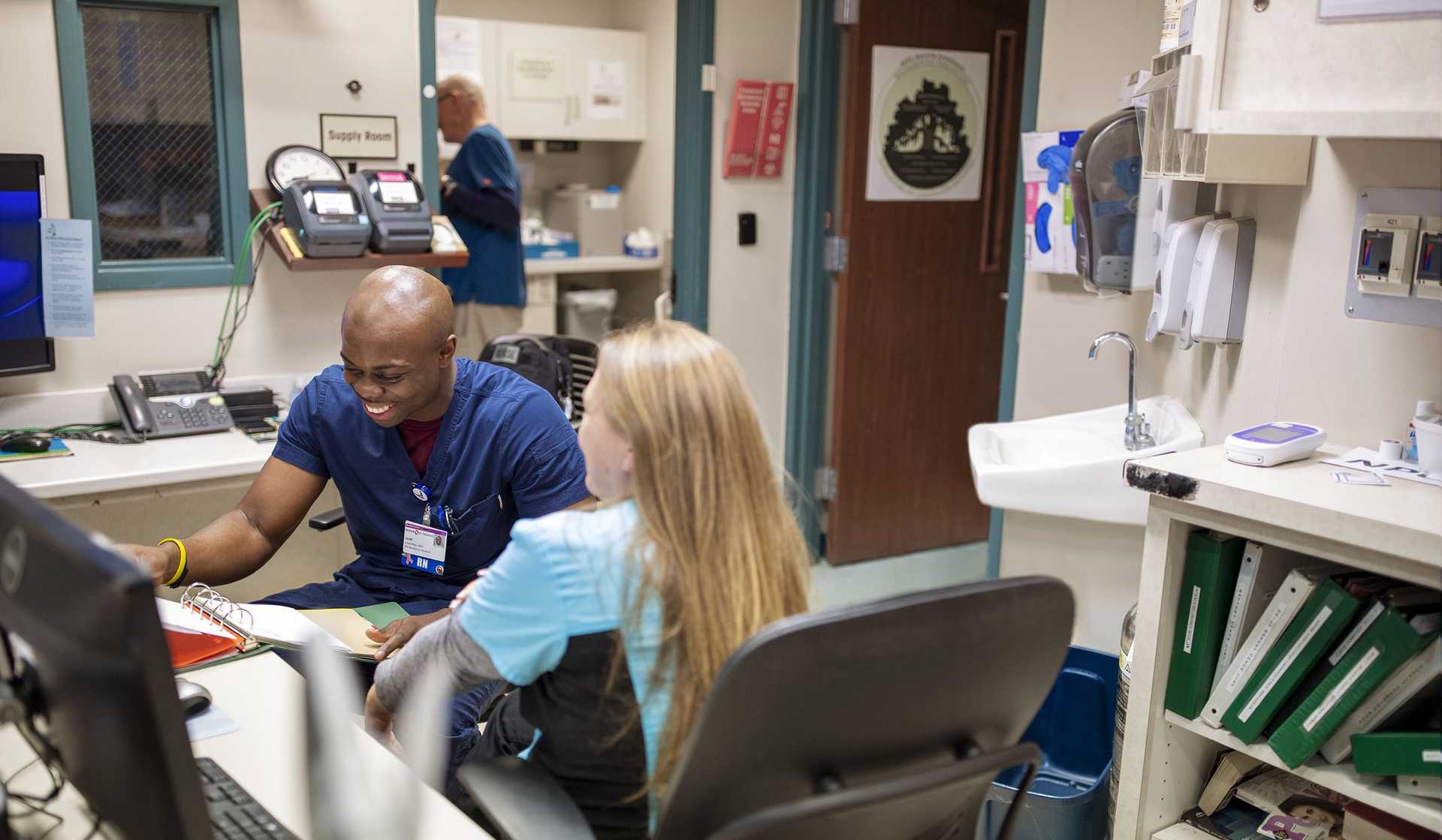

07:00PM
"This has to be my favorite picture. These are all medical providers, my peer group if you will a lot of different physicians from different specialties. They are a great group of people. I see them at drill weekend, but sometimes we hang out in our free time, too. Some were even at my wedding. Just like a sports team, you always know your team well. They are people I trust implicitly."

Sara Burdash, M.D.
Field Surgeon, Army National Guard
"This has to be my favorite picture. These are all medical providers, my peer group if you will a lot of different physicians from different specialties. They are a great group of people. I see them at drill weekend, but sometimes we hang out in our free time, too. Some were even at my wedding. Just like a sports team, you always know your team well. They are people I trust implicitly."

07:00PM
Kayaking On Puget Sound
Josephine enjoys living in the Pacific Northwest and takes advantage of her beautiful surroundings. She especially loves kayaking in Gig Harbor, a picturesque bay in Puget Sound.

Josephine Nguyen, M.D.
Dermatologist, Navy
Kayaking On Puget Sound
Josephine enjoys living in the Pacific Northwest and takes advantage of her beautiful surroundings. She especially loves kayaking in Gig Harbor, a picturesque bay in Puget Sound.
NGUYEN: In the Military, hospitals open at sometimes six or seven o’clock, but by the time the hospital hits 1600, or 4 p.m., it’s 95 percent empty. They encourage you to have strict hours and they encourage you to leave and go home and take care of your family, because they know that if you’re not having that relaxing time and having family life, you won’t be able to contribute at work fully.
One of my favorite activities is kayaking. It combines some of the best natural elements that are available to you — one, being outside in nature, and two, being surrounded by one of the most peaceful things in the world, which is water. Water is known to be therapeutic, and to be surrounded by it and watching and hearing the waves, is very — it’s so soothing for anybody.
I think the best part was actually just hanging out with your friends on the water, where you’re just away from everybody, everything and the noise. And the awesome part is that it’s my job that took me out here. I never would have thought to even come out to the Pacific Northwest, because I grew up in DC. And that’s what’s the great part about the Military — it takes you out of your comfort zone and puts you — transplants you somewhere that you’d never even think about, and my gosh, that’s been the whole story of my career in the Military, is this continual growth, expansion and meeting new people from all walks of life.

07:00PM
Ice Hockey With Family And Friends
When Hunter is off-duty, spending time with his family is top priority. Tonight after work, Hunter and his family head to the local ice rink to meet with friends and skate with members of his son's ice hockey team.

Hunter Winegarner, M.D.
Special Forces Battalion Surgeon, Army
Ice Hockey With Family And Friends
When Hunter is off-duty, spending time with his family is top priority. Tonight after work, Hunter and his family head to the local ice rink to meet with friends and skate with members of his son's ice hockey team.
WINEGARNER: So we're getting on home, and spending time with the family at five o'clock or so every day is enough time before my kids go to bed — they usually go and do something fun. A couple times a week we'll go and do some ice hockey with my son.
CORMAC: Daddy's home! Yay!
WINEGARNER: Hey, buddy.
CORMAC: Hi!
WINEGARNER: How's it going? You guys ready for hockey tonight?
REESE: Yeah!
WINEGARNER: Yeah?
MORGAN: Are you ready?
WINEGARNER: Yeah? Cormac, can you help me with any of these? I need some help, big guy.
REESE: I'll drive.
MORGAN: Reese wants to drive. (laughter)
WINEGARNER: We started Cormac out when he was — how old were you when you first started skating?
CORMAC: Two.
WINEGARNER: Two. I think we got him on his first set of skates pretty quickly after he learned how to walk, but now how old are you?
CORMAC: Four.
WINEGARNER: He's four, and that's kind of when kids can start skating with a group and doing actual hockey stuff.
Good. Coming around. All the way around. And when you get it, take a shot. Oh my goodness, you shot all the way down the ice! Holy cow!
I guess I started skating when I was five, and growing up in Alaska it was kind of the thing to do. And I've continued to play, even as a doctor. Some of the guys that came out today are guys that I've met with my unit that also play hockey, and it continues to be a big part of my life and something that's really important to me. It's a misconception if people think that being an Army doctor is going to be too busy to have a life outside of work. As this guy can attest, there's times where it's busy and there's times where it's hard to make it happen, but for the most part it's part of the lifestyle of being an Army doctor that you get time with your family.

07:10PM
"The name 'Solsidan' is a Swedish word that loosely translates to 'bright side' or 'sunny side.' It's also the name of a Seinfeldesque comedy in Sweden. Hilarious."

Jonathan Forsberg, M.D., Ph.D.
Orthopaedic Oncologist, Navy
"The name 'Solsidan' is a Swedish word that loosely translates to 'bright side' or 'sunny side.' It's also the name of a Seinfeldesque comedy in Sweden. Hilarious."

07:26PM
"I have friends I've made from meet-ups in Tacoma, at work, school and church, and the best part of the day is getting to relax with them after work. Tonight, we're all having dinner together at a local restaurant."

Josephine Nguyen, M.D.
Dermatologist, Navy
"I have friends I've made from meet-ups in Tacoma, at work, school and church, and the best part of the day is getting to relax with them after work. Tonight, we're all having dinner together at a local restaurant."

07:28PM
"Looks like someone was shot with a paintball during the medical training. This is why it's critical we use safety masks when simulating care under fire."

John Trentini, M.D., Ph.D.
Emergency Medicine Resident, Air Force
"Looks like someone was shot with a paintball during the medical training. This is why it's critical we use safety masks when simulating care under fire."

07:50PM
"During the race, I felt like our boat speed was good and our tactics were decent. Here we're seen rounding the windward-most mark [green spinnaker] just ahead of another competitor [red spinnaker that has not yet filled]. The spinnakers are used to sail downwind. The smaller triangular jib is used to sail upwind."

Jonathan Forsberg, M.D., Ph.D.
Orthopaedic Oncologist, Navy
"During the race, I felt like our boat speed was good and our tactics were decent. Here we're seen rounding the windward-most mark [green spinnaker] just ahead of another competitor [red spinnaker that has not yet filled]. The spinnakers are used to sail downwind. The smaller triangular jib is used to sail upwind."

